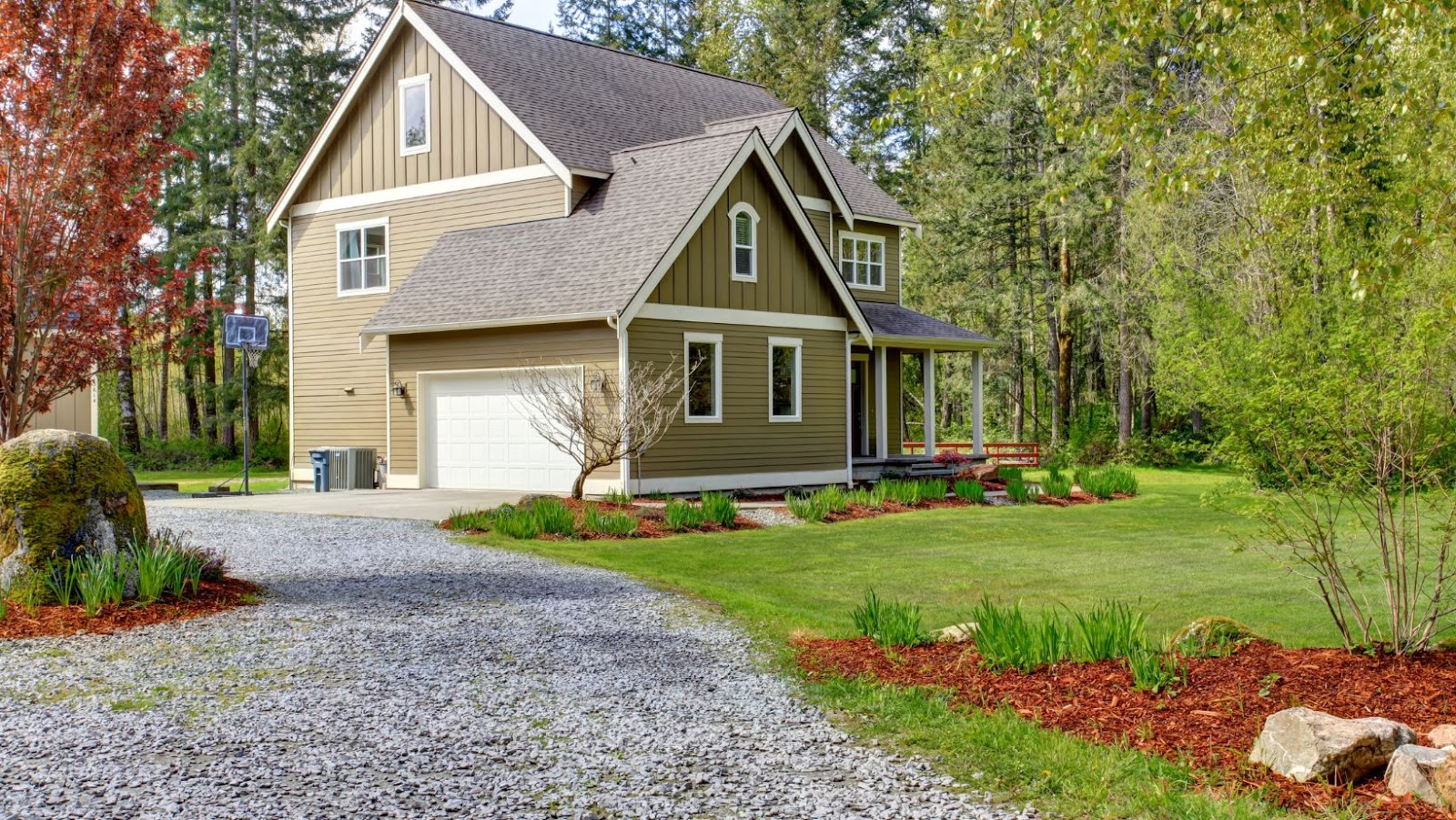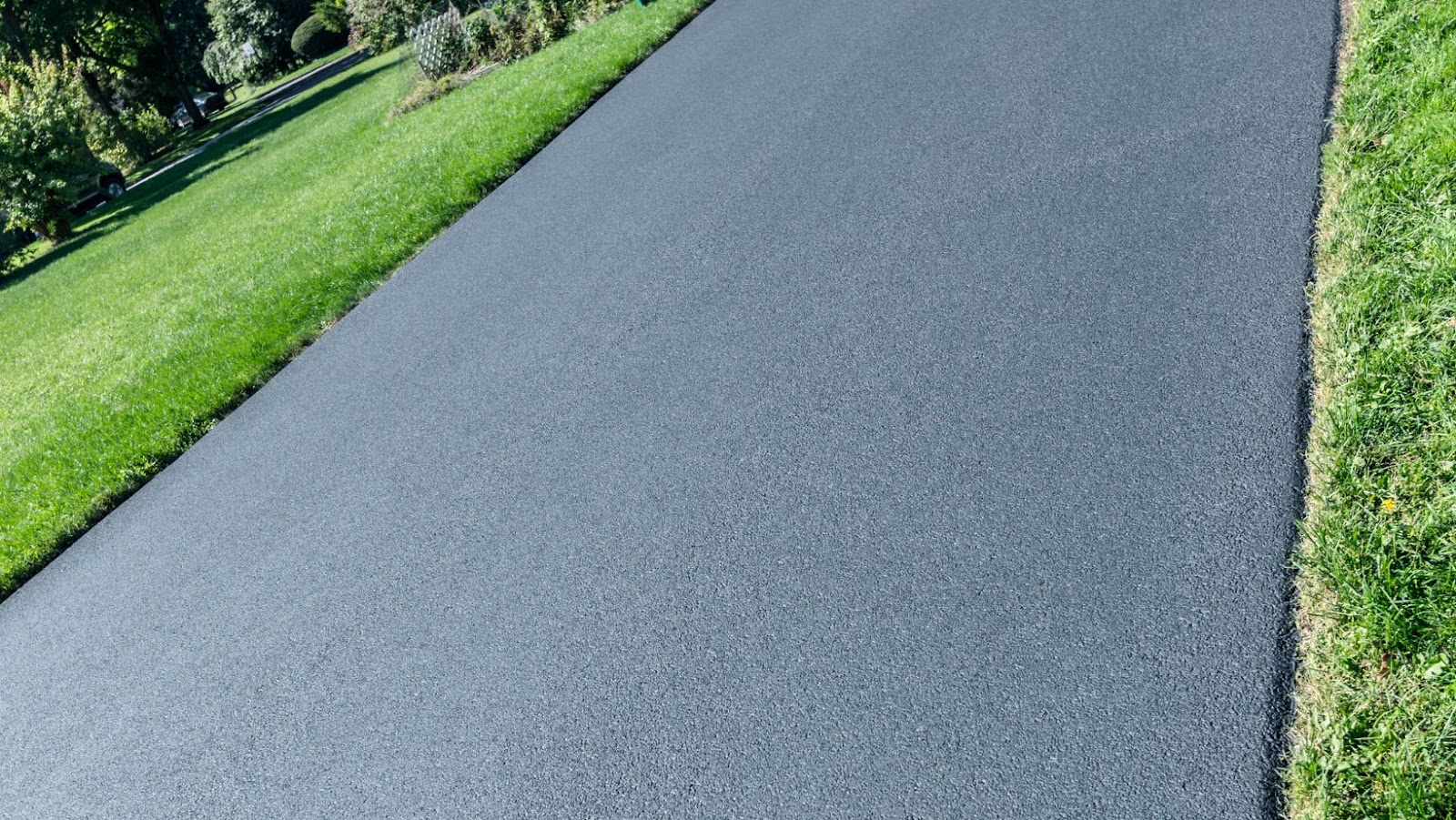How to fix a gravel driveway overgrown with grass
Fixing a gravel driveway overgrown with grass requires only a few tools and materials. These include a small tractor or lawnmower, a shovel, a rake, gravel, a flat paving stone, and a soil stabilizer. With these tools and materials, you will be able to clear the driveway of grass and make a few improvements to ensure a better finished product. Let’s take a closer look at all the items needed to complete this project.
Shovel
A shovel is one of the most important tools you will need while fixing a gravel driveway overgrown with grass. When used correctly, the shovel can be used to help excavate overgrown grass, remove the existing gravel, dig foundations for new gravel installers and dig ditches or trenches. It is a versatile tool that is essential to fixing a gravel driveway overrun with grass.
To choose the right shovel for your job, consider the handle material that provides strength and durability. Polypropylene fiberglass handles are typically found on quality shovels and provide grip even in wet conditions. Additionally, look for a bottom blade made of hardened steel for superior digging performance and long-lasting efficiency. The width of the shovel should also be taken into consideration depending on your needs: narrow blades are great for narrower jobs such as maneuvering around tougher configurations while wide blades can handle larger projects like shoveling dirt quickly and efficiently. Finally, make sure that you have reliable tools at hand by storing them properly in sheds away from moisture when not in use.
Rake
When dealing with a gravel driveway that is overgrown with grass, having the correct tools and materials is essential. A large landscape rake will be the first tool of choice. This rake will allow you to pull up large amounts of grass and debris at a time. It will also come in handy when removing any clumps of dirt or stones that have become trapped in the weeds and grass. Be sure to remove as much debris as possible before attempting to start working on filling in patches or repairing any areas on the driveway that have been damaged by weeds or storm runoff. Different types of rakes can be used depending on the type and size of gravel you are using in your driveway.
Wheelbarrow
A wheelbarrow is one of the essential tools and materials needed to fix a gravel driveway that is overgrown with grass. This tool will enable you to easily move the soil, rocks, gravel, and other materials necessary for the repair. It will also help you transport larger debris such as chunks of asphalt and large stones without having to lift them manually. When purchasing a wheelbarrow, it is best to get one with a steel frame as this type is more rugged and durable than those made from plastic or another fragile material.
Landscape fabric
Landscape fabric is an essential tool for fixing a gravel driveway overgrown with grass because it provides a barrier that prevents the grass from pushing up through the gravel and growing on the driveway. This material is often made from woven polypropylene, plastic, or other synthetic fibers. The key is to select an effective product with good permeability so that water and nutrients are able to leach into the ground below the driveway. It should also be UV stabilized so it remains intact even in direct sunlight. Before laying out your landscape fabric, make sure you have tools necessary to measure out and cut the fabric correctly according to your needed size and shape.
Gravel
Gravel is a very important material for fixing an overgrown gravel driveway, as it not only helps to prevent weeds from getting into the driveway, but also helps to provide a base layer that will help to support the weight of vehicles driving on it. The type of gravel you need to use depends on the driveway size and existing conditions. For a small-to-medium sized driveway (less than 1 car length), you will likely need between 3 and 4 inches of small stones or pea gravel. For larger driveways, you may need up to 5 or 6 inches. It’s best to talk with a local landscape supply company, who can offer advice on which type of gravel is best for your particular situation. If considering commercial grade gravel, make sure it’s suitable for driveways and not just for walkways or gardens as this could cause problems with drainage over time.
Preparation
Before you can repair a gravel driveway overgrown with grass, you’ll need to make sure that you have the right tools and materials. The first step to repairing your driveway is to make sure you have a rake, a shovel, gloves, and some edging material such as plastic or metal edging. Additionally, you’ll need to make sure you have enough gravel to fill any gaps or holes. You can also get some grass killer or mulch to help speed up the process. With these materials in hand, let’s get started.
Remove existing grass and weeds
Removing the existing grass and weeds is the first step in fixing a gravel driveway overgrown with grass. To do this effectively, you will need a few simple tools.
• Garden fork – A garden fork is one of the most helpful tools for loosening and breaking up the soil around existing weeds or grass. You may need to use several forks to make sure that all the roots are completely removed from the gravel area.
• Wheelbarrow or garden hose – Depending on how much grass needs to be removed, your wheelbarrow can provide an easy way of transporting debris away from the driveway area after you have used your garden fork. Or, if you prefer a faster solution, hook up a garden hose so that water can blast away layers of dirt and debris.
• National Organic Program-Certified herbicide (NOP) – This type of herbicide is important when it comes to clearing out large areas of invasive plants or removing any existing vegetation from your gravel driveway. Be sure to read labels carefully and only use this type of product if it is safe for use in the specific situation you are attempting to fix.
• Shovel – Before rolling out new gravel, you will want to make sure that all old roots and other organic material have been completely removed from below the surface. In some cases, running a shovel through each layer may be necessary before adding anything else into place in order to ensure that everything has been properly cleared away from beneath ground level.
• Rake/rake combo – A rake or rake combo can help break up clumps of soil while leveling out uneven areas at ground level prior to adding new gravel material over top. Alternatively, sand can be used as an alternative foundation material before new gravel is added in order to lay a solid base for your “re-grassed” driveway foundation layer.
Level the ground
The first step in addressing an overgrown gravel driveway is to level the ground and remove any vegetation. This includes grass, weeds, and other forms of foliage that is lying within the path of the driveway. You will need a variety of tools to complete this task, including:
-Rake: To rake away grass, weeds and other debris from the surface of the driveway
-Shovel: To dig out deep-rooted vegetation or break up clods of soil
-Hoe: To smooth out bumps in the surface after leveling
-Wheelbarrow: To transport materials away from the work area
-Edger: To trim along curbs; available in metal or plastic varieties
-Grader blade: For smoothing out larger sections of ground (optional)
-Garden hose or sprayer bottle with herbicide solution (optional): To spot treat any areas that have invasive plants or weeds
Any additional materials you may need depend on your individual situation and can include more soil, gravel, erosion control material such as sandbags, drop cloths to cover landscaped areas, etc. Once you have gathered your tools and materials together it’s time to start prepping.
Install landscape fabric
Installing landscape fabric is a great way to help stabilize soil and control weeds in garden beds or along sidewalks and driveways. Many fabrics are permeable, allowing water to pass through while still controlling the growth of weeds.
To install landscape fabric, you will need a shovel, scissors or utility knife, heavy duty landscaping pins or stakes and a canvas roller if needed. Start by clearing the area of stones, rocks, sticks and debris then measure the area you’re covering. Cut your fabric length to size using your scissors for straight lines or a utility knife for curved areas; leave space for at least one inch of overlap around corners.
Lay the fabric over the area and make sure there is enough tension in it to prevent any shifting during installation. Secure the edges with heavy duty landscaping pins every 12 inches apart; use extra pins for curves and corners as needed. If you’re using thick layers of course material such as gravel or crushed stone you may wish to use a canvas roller over top to ensure good soil-to-fabric contact before adding the course material on top which will help keep the fabric in place while also providing extra drainage capabilities.
Laying the Gravel
Laying down the gravel is an essential part of fixing a gravel driveway overgrown with grass. Without the correct tools and materials, it will be hard to properly lay the gravel and ensure that the driveway remains stable. In this section, we will go into detail about the tools and materials needed to lay the gravel for your gravel driveway.
Spread the gravel evenly
To complete the fix, you will need to spread the gravel evenly across your driveway. To do that, there are several tools you will need.
First, you will need either a shovel or a power shovel to remove the grass that’s been growing in the gravel and aerate it so that it won’t be too clumpy and uneven as it is distributed. A garden rake can also be used for this task.
Next, an asphalt rake—a tool specifically designed for spreading gravel—would be helpful for level distribution. Some of these have adjustable wheels that allow you to gauge how much gravel should be spread in one go for uniform results without over-raking the driveway in the process. It is also recommended to use a motorized tamper (small rubber pad attached to a stick) or plate compactor if possible. Depending on your budget and needs, renting either machinery would do an efficient job of pushing down and flattening soil so that stones stay put before being covered by more stones or other materials on top of them (such as sand). By pressing down small stone paths into packed soil with a compactor, this helps make sure there aren’t large amounts of dust particles affecting the overall quality once everything else is laid out correctly.
Lastly, to maintain an even look after distributing gravel? It is important to purchase stones in different sizes according to what type of driveway material that best suits your budget & needs- this includes 20mm A3 basalt chips (lighter grey appearance which requires little maintenance), 50mm A3 aggregate (generally darker grey appearance with larger particle size which requires more maintenance than 20mm.) After consulting with your local depot supplier about what kind fits best for larger areas such as driveways? You can then begin ordering according to cost & quantity- ensuring lay out consistency before folding over any adjoining bound surfaces.
Compact the gravel with a compactor
After removing the grass and weeds, it’s time to start compacting the gravel with a compactor. Clear any remaining vegetation and loosen any compacted soil around the edges to make sure that the compactor has ample space to work. Depending on the size of your driveway, you can opt for either a walk-behind or a ride-on compactor model. A walk-behind compactor is simply a machine that you push and can weigh up to 350lbs where ride-on models are best for larger driveways and carry up to 2000 lbs of weight.
Once you have your compactor in place, start by laying down a layer of fabric/plastic sheeting to help keep the gravel in place. Next, add fresh new gravel in layers at least four inches deep concreting each layer with an even spread of water as you go about this process. Compact each layer well with your compactor until the driveway is smooth. Finally, top off your driveway with additional gravel if needed and finish off by using an edging tool around the edge of your newly formed driveway to give it an organized finishing touch before raking it out evenly.
Secure the gravel with edging
Once the grass and weeds have been removed from the gravel driveway, it is important to secure the gravel with edging. Edging can be made of plastic, metal, or concrete, and many materials are available to purchase at home improvement stores. Plastic edging should be installed in shallow trenches along the perimeter of the driveway, while concrete or metal edging will need to be laid and secured deeply enough into the ground so it will not move when filled with gravel. The edging should be laid level and be longer than is necessary — it can always be cut down afterwards if needed. Once it is laid and secured properly, fill in around the edges with soil or wet cement mix. This keeps everything level before adding additional layers of material.
Finishing Touches
If you’ve finished clearing the grass from your gravel driveway and are ready to put the finishing touches on, there are a few essential tools and materials you will need to do so. From rakes, sand, and gravel to gloves, clippers, and a shovel, we’ll break down what you need to get the job done efficiently.
Add a layer of topsoil
Topsoil helps to fill and level out impressions that can be caused by rain or snow, as well as promote grass growth where necessary. When adding a layer of topsoil, it is important to get the mixture and the amount of soil right; otherwise the results will be unsatisfactory. Start by measuring the width and length of your driveway, and then calculate how many cubic feet you will need based on 1-2 inches of topsoil. For this project you may want to consider purchasing topsoil in bags, versus buying it in bulk. Once you have estimated how much soil you need, it’s time to mix your materials.
A basic mixture for driving over consists of 35% contractor grade topsoil perlite/vermiculite blend, 35% pea gravel (62-38 size aggregate), 25% coarse sand (60-20 size aggregate) and 5% water. Adjust volume proportions accordingly for proper depth desired for your finished material (1-2 inches). This type of mix should be applicable in most climate zones; however if you live in a more extreme climate (for example very hot or humid climates), then you should research more appropriate material types for your local area before proceeding.
Once your materials are ready to use, lay down a 0 – 1 inch thick layer on the surface of driveway, level it out with a rake or shovels as needed, make sure that all holes are filled with topsoil mix so no “bowls” form once settled after heavy rainfall or significantly cold temperatures occur. After this phase your driveway is now ready for overseeding or hydraulic seed application – allowing nature’s grass seed nutrients available weather conditions to do its “magic” and promote robust grass development!
Plant grass seed
Before planting grass seed over a gravel driveway, it is important to prepare the existing driveway first. To create a hospitable environment for the new grass to thrive, start by removing any visible weeds, grass clumps and loose pieces of gravel. If necessary, you may need to level out uneven ground with soil as well.
Once the area is addressed and prepped for planting, it’s time to begin sowing your grass seed. Grass seeds require plenty of sunlight and moisture to take root and grow properly. Best practices suggest applying a starter fertilizer before sowing the seed, in order to ensure targeted essential nutrients reach the future roots of your lawn or garden. Next use a hand-crank spreader or garden seeder to distribute the seeds evenly across your gravel driveway.
As an additional measure against weeds and dryness, you may want to top dress dried grass seeds with a thin layer of organic mulch such as shredded wood bark or wood chips. This should be done approximately two weeks after seeding in order to shield against extreme sun heat while also helping hold water in place closer to the roots of new vegetation. Stick close by during this time — water generously until you begin seeing signs of successful germination (about 10–15 days after planting) and then reduce watering on alternate days gradually until established root systems are in place (1–2 months).
Water the area regularly
Watering the area where the gravel driveway is overgrown with grass is an important finishing touch of this project. This will help support new growth and encourage germination of seeds. It’s best to water your driveway in the morning, so that you can take full advantage of the sun’s warming rays without causing any overheating or over saturation on a hot summer day. Additionally, watering should be done using intervals to avoid creating pockets of puddles or flooded areas that could lead to instability beneath the gravel surface. A timer-controlled sprinkler system coupled with a pre-determined cycle schedule can provide the ideal balance between keeping your driveway moist while conserving water resources.








